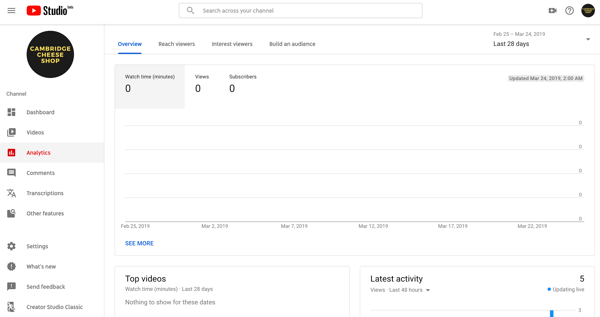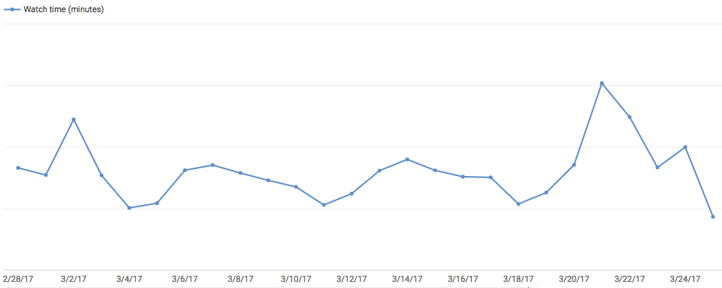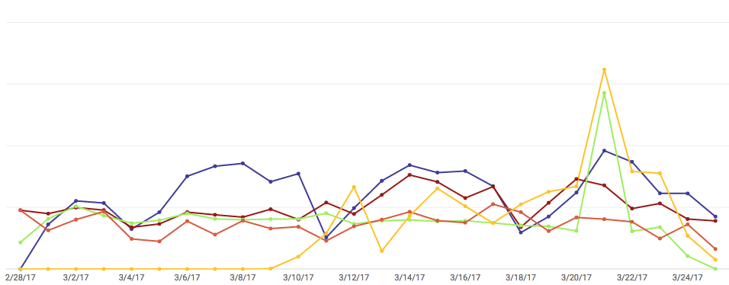Determine Your Purpose
First things first, you could not measure your success without understanding your goal. When you have filmed, edited, uploaded, optimized, and shared your video and still do not know what purpose you’re attempting to achieve, we have a problem. Your purpose needs to drive your video strategy from start to end.
You need to concentrate on targeting one goal per video (as we talk about here). A few of the most common video goals are to extend brand awareness, views, clicks, or inbound links or social shares. Relying on how you utilize the video in your marketing material, the purpose can be to extend the open rate of an email series or increase the conversion rate on a landing page. YouTube is a good platform for raising brand awareness.
Because the world’s second-largest search engine, YouTube permits your videos to be seen by organic search or paid advertising. Video is a good way to humanize your brand by showcasing real employees, customers, or partners. It also permits you to build credibility by publishing informational content that helps your target customers. Selling your videos through paid advertising versus organic search could impact the kind of video you need to create. When you are planning to extend awareness organically, consider filming the history of your company, customer reviews, or product tutorials.
Key Metrics to Track
Now that we have talked about why figuring out a purpose is so necessary, we will discuss how to effectively measure success. At first glance, understand YouTube analytics could be pretty overwhelming. On the flip side, it’s frustrating once you upload a video and do not receive as many views or as much engagement as you were expecting. YouTube analytics shows you how viewers found your content, how long they watched it, and how much they engaged with it. Let’s begin by going over what exactly you could measure and how to find it.
First, head to youtube.com/analytics. You need to be directed to an analytics dashboard that shows an overview of how your videos have been performing during the past 28 days. You could adjust the analytics timeframe by clicking on the drop-down menu at the top right corner. The overview report features some top-line performance metrics, engagement metrics, demographics, traffic sources, and prevalent content.
You may also filter your outcomes by content, device type, geography or location, all video content or playlists, subscriber status, playback kind, site visitors by different YouTube products, and translations. In addition to filtering outcomes, YouTube permits you to display your leads to a variety of different charts and even an interactive map.
While there is no one-size-fits-all approach for reporting and measuring the success of a campaign, below are some key metrics that you need to take note of.
Watch Time and Audience Retention
Watch time reports the total number of minutes your audience have spent viewing your content on your channel as a whole and by video. This helps you see what pieces of content viewers are actually consuming instead of just clicking on and navigating away from.
Watch time is necessary because it’s one of YouTube’s ranking factors. A video with a higher watch time is more likely to rank greater in outcomes. YouTube provides a line item report on watch time, views, average view duration, and average percentage viewed for individual videos, location, publish date, and more.
A video’s average percentage viewed, or retention rate indicates the typical proportion of a video your viewers watch per view. A higher percentage means there’s a better chance that your viewers will watch that video until the end. Attempt to place cards and end screens in videos with a higher average percentage viewed rate to grow the number of views your calls-to-action receive.
Sample watch timeline chart
Sample watch time multi-line chart
Traffic Sources
The traffic sources report illustrates how viewers are finding your content online. This gives valuable insight on where to greatest promote your YouTube content. For instance, you could see if viewers are finding your content through YouTube search or Twitter. To view more in-depth visitors reporting, click on the overall traffic source category. This information could help refine your YouTube marketing strategy. Make sure to optimize your metadata based on your findings.
Sample traffic sources overview bar chart
Sample external traffic sources bar chart
Demographics
The demographics report helps you know your viewers by reporting on their age and gender. You could then break down age groups and genders by other criteria like geography. This report will assist you to better market to your YouTube audience and understand in case your content is resonating with your established buyer personas.
Make your videos marketing stronger with buyer personas. Download our free Persona Templates here.
Sample demographics bar chart
Engagement Reports
Engagement reports assist you to learn what content is resonating with your audience. Right here you could see what viewers are clicking, sharing, commenting, and promoting. You could also see how your cards and end screens are performing in your engagement reports. Cards and end screens report assist you to learn what your audience is engaging with so you could optimize your calls-to-action in future videos.







